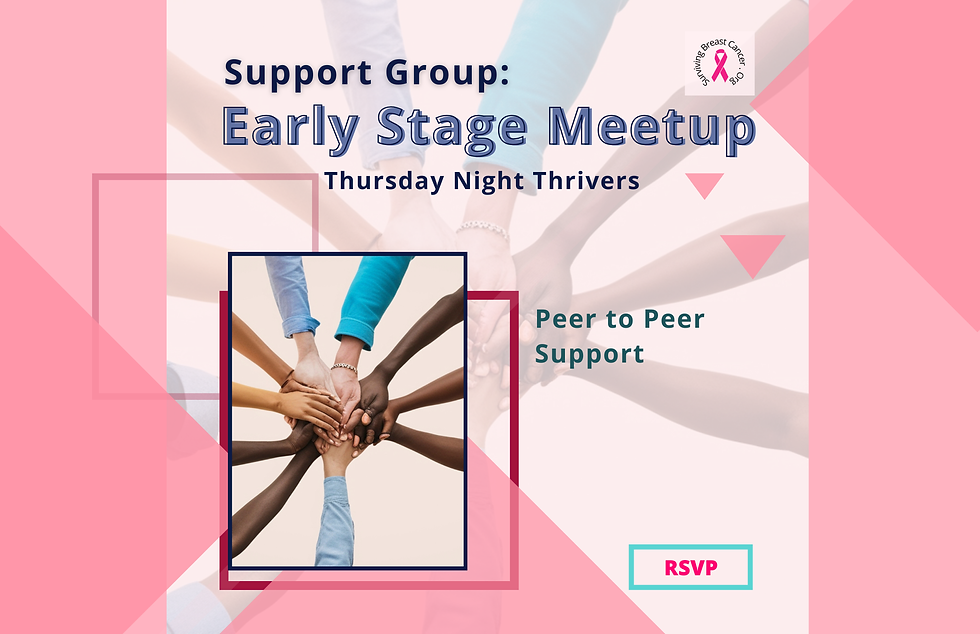Built Environments: Exploring Environments and Health
- Surviving Breast Cancer

- Aug 7, 2022
- 3 min read
Updated: Aug 18, 2025

Over 70% of people with a breast cancer diagnosis do not know why they developed the disease. Could it be environmental? The built environment is a term which refers to human-made surroundings, ranging from buildings, schools and office spaces to parks and neighborhood infrastructure. It is the setting in which we live, work, and socialize. Have you ever wondered how the environment around you affects your health and well-being?
Neighborhoods are key determinants of health. The infrastructure of your neighborhood plays a significant role in your health and well-being. As an example, does your neighborhood have sidewalks where you can easily take walks, and for your children to safely ride their bicycles? Do you have access to outdoor green spaces and parks? Do you have access to fresh groceries and healthy food?
Studies have shown that these built environment factors are associated with physical activity levels and dietary patterns. If you live in a suburb, you may have access to good roads and sidewalks, but what is the tradeoff; reliance on cars contributing to air pollution and a more sedentary life-style driving to and from work, to and from the grocery store and so on? That is not to say we should all rush to move into the cities either. While city planning allows for increased bike lanes and a commuter culture of walking to the bus stop or walking a few blocks from the train to the office, people may also be more likely to pick up fast food from a convenience store, or eat out more often versus cooking at home.
Our environment influences our behaviors. Neighborhood factors influence the health habits among cancer survivors, affecting survivorship outcomes, disease recurrence, and mortality. Medical evidence is beginning to show the correlation of neighborhoods' disparities in cancer risk. If people are living in an environment that promotes a more sedentary lifestyle, they are at an increased risk of gaining weight and becoming obese, which can lead to poor health outcomes and longer term health risks such as cardiovascular disease, diabetes and cancer.
Today’s #FeatureFriday focuses on the built environment and the conscious decisions we all take to move our bodies daily and advocate for sidewalks, bike lanes, access to healthcare, healthy foods, education, and to cut down on toxic carcinogens in our environments.
How has your environment affected your health? Let us know at hello@survivingbreastcancer.org.
Articles:
Transportation is an element of the built environment interrelated to accessibility and housing. Good access to transportation ensures access to high-quality screening services and has been found to be associated with less severe stages at diagnosis for many cancers. Transportation infrastructure, such as ports, railways, and expressways is also associated with higher rates of air pollution and, in turn, higher exposure-based risks for lung, colorectal,
and nervous system–based cancers.
Many environmental factors that affect relative weight can be classified under sixteen headings. The first of them, the built environment factors that act upon body weight balance include physical, chemical, biological agents, urban housing and social conditions, transportation and pollution related to the proximity of influential agricultural or industrial environmental centers of activity. There is a statistically significant relationship between some aspects of the built-up environment and risk of obesity. Understanding the influence of both opportunities for physical activity and access to healthy foods is critical to obtaining a comprehensive picture of this connection.
Social determinants of health are conditions in the environments in which people are born, live, learn, work, play, worship, and age that affect a wide range of health, functioning, and quality-of-life outcomes and risks. Examples of these resources include safe and affordable housing, access to education, public safety, availability of healthy foods, local emergency/health services, and environments free of life-threatening toxins. Understanding the relationship between how population groups experience “place” and the impact of “place” on health is fundamental to the social determinants of health—including both social and physical determinants.
According to the Centers for Disease Control and Prevention, the built environment “includes all of the physical parts of where we live and work” (2011, 1). These include our homes, workplaces, streets, neighborhoods, infrastructure, buildings, parks, trails, and even vacant properties that once contained structures. Health equity means that “everyone has a fair and just opportunity to be as healthy as possible.”1 To achieve health equity, communities must address the differing levels of access that various groups have to health-promoting systems and resources like housing, transportation, jobs, parks and recreation facilities, food, medical care, and neighborhoods and their differing levels of quality, cost, and safety.














